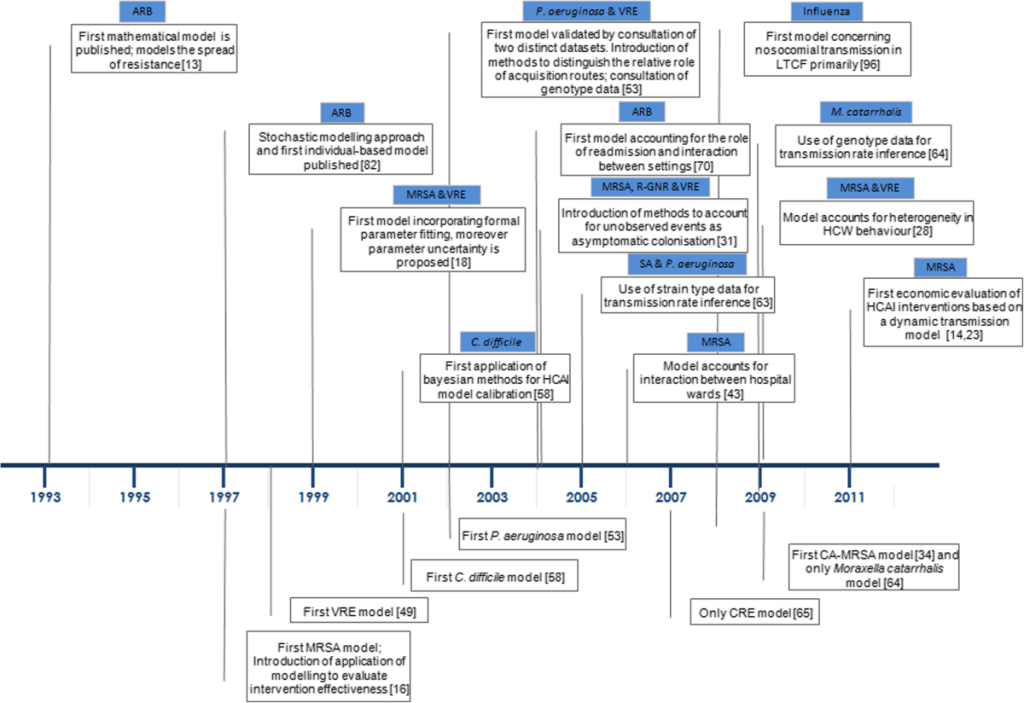In the past years, several mathematical models have been set up to gain a better understanding of HAI transmission. A recent publication gives a good overview of these efforts.
In the article, 96 scientific papers were analyzed from major databases like: MEDLINE, EMBASE, Scopus, CINAHL plus and Global Health, for dynamic mathematical models of HAI transmission and/or the dynamics of antimicrobial resistance in healthcare settings.
The main research themes reviewed were:
- evaluation of infection control effectiveness,
- variability in transmission routes,
- the impact of movement patterns between healthcare institutes,
- the development of antimicrobial resistance,
- strain competitiveness or co-colonization with different strains.
Milestones of HCAI modelling. Timeline listing new applications of mathematical models for HCAI and antimicrobial resistance over time as well as improvements of these models according to year of publication.
MRSA was the most commonly modeled HAI (34 %), followed by vancomycin resistant enterococci (16 %). Other common HAIs, e.g. Clostridum difficile, were rarely investigated (3 %). Very few models have been published on HAI from low or middle-income countries.
Taking actions against the spread of HAI, these papers describe several interventions taken by the hospitals:
- hand hygiene (37%; 23 studies)
- patient isolation (24%; 15 studies)
- healthcare worker cohorting (23%; 14 studies)
- antibiotic stewardship (21%; 13 studies)
- screening (18%, 11 studies)
“Recent technological developments in microbiology have resulted in enhanced access to pathogen sequence data, which could help to further improve HCAI models. Such data are beginning to inform disease outbreaks e.g. of avian influenza A (H7N7) and Foot-and-Mouth disease. Importantly, the increasingly routine use of sequencing of genetic material for epidemiological purposes can provide valuable insight, such as aiding in the understanding of the role of asymptomatic carriers in transmission (e.g. of C. difficile) and evolution of antimicrobial resistance.”
In conclusion “transmission models have been used to understand complex systems and to predict the impact of control policies. Methods have generally improved, with an increased use of stochastic models, and more advanced methods for formal model fitting and sensitivity analyses. Insights gained from these models could be broadened to a wider range of pathogens and settings. Improvements in the availability of data and statistical methods could enhance the predictive ability of models”
